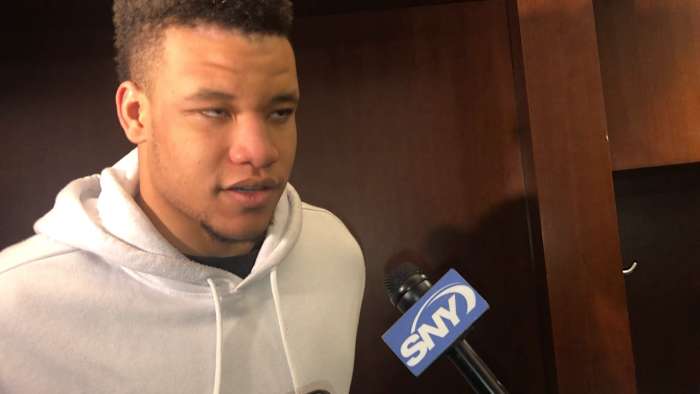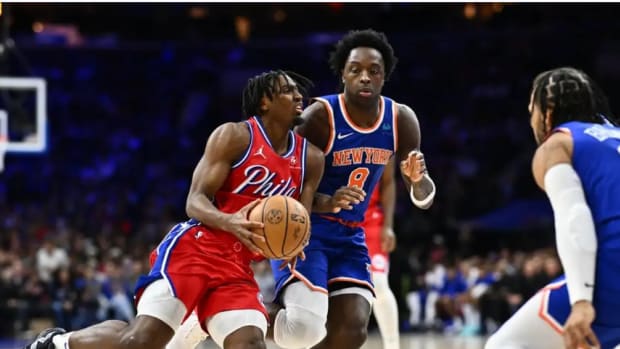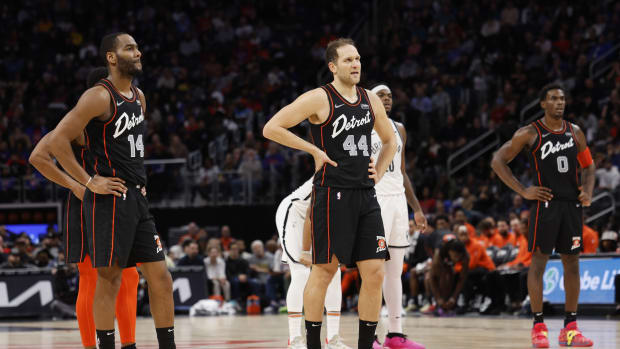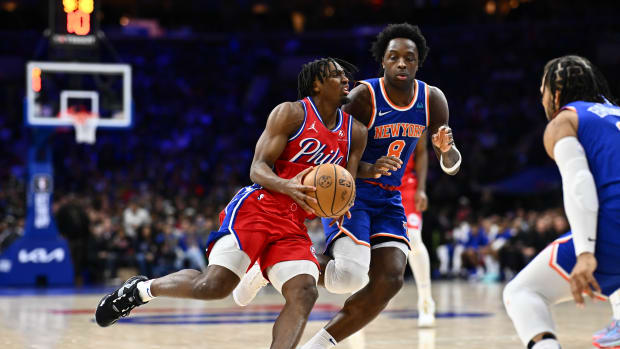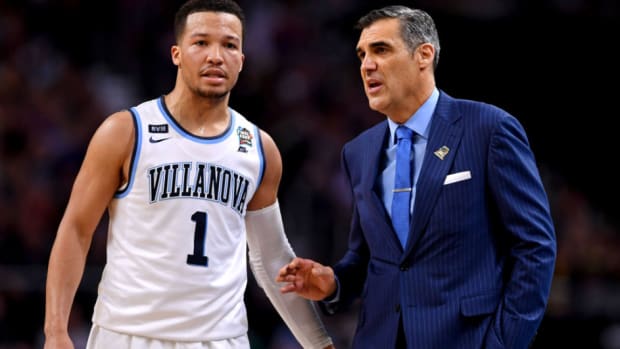WATCH: Kevin Knox Has Some Goals, Here's How He Reaches Them With Knicks
It is fair to wonder, approximately 1 1/3 seasons into the career of Kevin Knox, exactly what his development curve ought to be.
In part, the uncertainty comes from his youth. In part, it is a lack of a coherent roster plan for the team around him. In part, it is how unformed his game really was when he arrived in the league.
Regardless, he's established some clear skills, and is looking to add to them in a comprehensive way, as the way he laid it out Tuesday night showed.
"Just trying to be more aggressive on defense, play with some more urgency," Knox said when asked about a blocked shot he recorded against the Atlanta Hawks.
The play didn't happen in isolation, though. While Knox received an ill-fated start at shooting guard under David Fizdale, and has typically existed as more of a 2/3 player for much of his career-to-date, Mike Miller has been utilizing the 6'8 Knox as essentially a stretch four.
Both roles require elite perimeter shooting as a baseline, which we'll get to. But the stretch four allows him to spend less time worrying about on-ball defending against the quicker players in the league.
It does mean that Knox needs to establish his rim-protecting bona fides. And while it's a very small sample, there's encouraging news on that front.
In 2018-19, Knox posted a block percentage of 0.9. In 2019-20, it is 2.1, more than double. Even that understates what he's done since the calendar flipped to December. Coming into the month, he was at 1.1. Since his DNP-CD against Philly on November 29, he's up to 4.1.
Some points of comparison on that front: Draymond Green's career block percentage is 2.9. Same with Al Horford. Serge Ibaka's is 5.8, and was 4.3 for the champions in Toronto last season.
This is not to say that Knox is equal to these players yet, or anywhere close. But it is worth noting that he is flashing a skill here that would bring them into their orbit.
That said: the shooting is the critical part of the stretch four, and Knox, after a strong start, is actually below last year's accuracy from three. He's even worse over this time where he's been more focused defensively, just 23.7 percent in December. Still, most observers see Knox's shot as the closest thing to a given in his skill set, and the mechanics of it look sound — the slump could well reflect growing pains as he incorporates other skills into his overall game.
Think of it this way: the less effective he is from three, the better he's going to need to be finishing at the rim.
In this way, too, he's been more aggressive over the past nine games. Overall in 2019-20, he's shooting 51.6 percent inside of five feet, on 1.6 attempts per game. But this, too, has changed of late. Since December started, he's at 52.4 percent on 2.3 attempts inside of five feet, compared to less than an attempt per game inside of five feet in November.
The pursuit of both rim protecting and greater effectiveness at the rim comes from weight training, and that's been a significant focus of Knox's offseason regimen, something he's carried into the new year as well.
"That's obviously something everyone I talked to said I'd have to do to become a really good defender," Knox said. "Really want to take that into mind, the weight room helps a lot — getting through screens, taking bumps on the defensive end, being able to stand in front of my man, lateral quickness, just being quick on my feet. Just getting stronger in the weight room."
How it works out for Knox, we'll know far better come March and April, with more data and further development time. Still, these are the benchmarks to watch, and it is encouraging for the Knicks, in and of itself, that Knox has a plan for how to reach them, and in the current roster setup, a means to keep growing.
